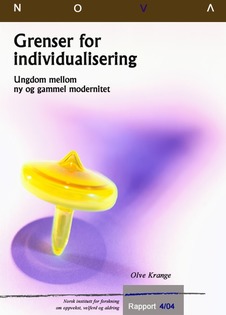| dc.description.abstract | Traditional ways of understanding youth have lately been challenged by theories of a new modernity.The author asks the following questions:- Do we need new terms about a new modernity to understand youth today?- Or, do old terms still contain significant insights into young peoples lives?The thesis, which consists of four empirical articles and a theoretical introduction, discuss the individualized society. Terms like high modernity, late modernity, risk society or liquid modernity are often used to label current social reality. Despite some differences the terms are comparable in pointing to some central developments. The idea that modern societies are becoming increasingly individualized is one such development. In short, the individualization hypothesis claims that old institutions have lost their influence over peoples lives - individuals are now left to them selves and their reflexive capacities while making important life choices. The theoretical introduction discusses how these diagnoses of modern social life imply a radical break with central insights in the sociological tradition stating that individuality and individual actions on a deep level are of a social nature.Increasing individualization could entail decreasing influence of social and cultural determinants when young people incorporate childhood taboos (like sexual actions and smoking cigarettes) into a legitimate repertoire of actions, or when they make up their minds for the first time on important political issues. From different empirical angles four articles give examples of how young peoples actions and attitudes are closely tied to cultures and structures that have survived from the earlier phases of modernity.- Article no. 1 "Reflexive tradition: Young working-class hunters between wolves and modernity" is about a network of young hunters with members who feel obliged towards their fathers old working-class culture, but at the same time incorporate it into modern life projects.- Article 2 "Return of the Marlboro Man? Smoking among Young Norwegian adults" shows that smoking is closely associated with the social position young people are aiming to acquire through their educational tracks, but also that consumption of cigarettes to a lesser extent is embedded in the class position of their background.- Article 3 "Anti-foreign sentiments among youth in Oslo: A matter of social stratification or individualized identity formation?" demonstrates that anti-foreign sentiment can occur through mechanisms evolving on the level of social class, or from a strong feeling of belonging to a nation, but also that class background and national identity do not correspond with each other.- Article 4 Å angre på sex" shows that sexual actions still is often legitimized through a norm encouraging sexual actions to be committed in a context of love, and that double standards for boys and girls still operate in the field of sexuality.The thesis concludes by stating, quite simply, that limits for how far individualization can develop, die hard. | en |
